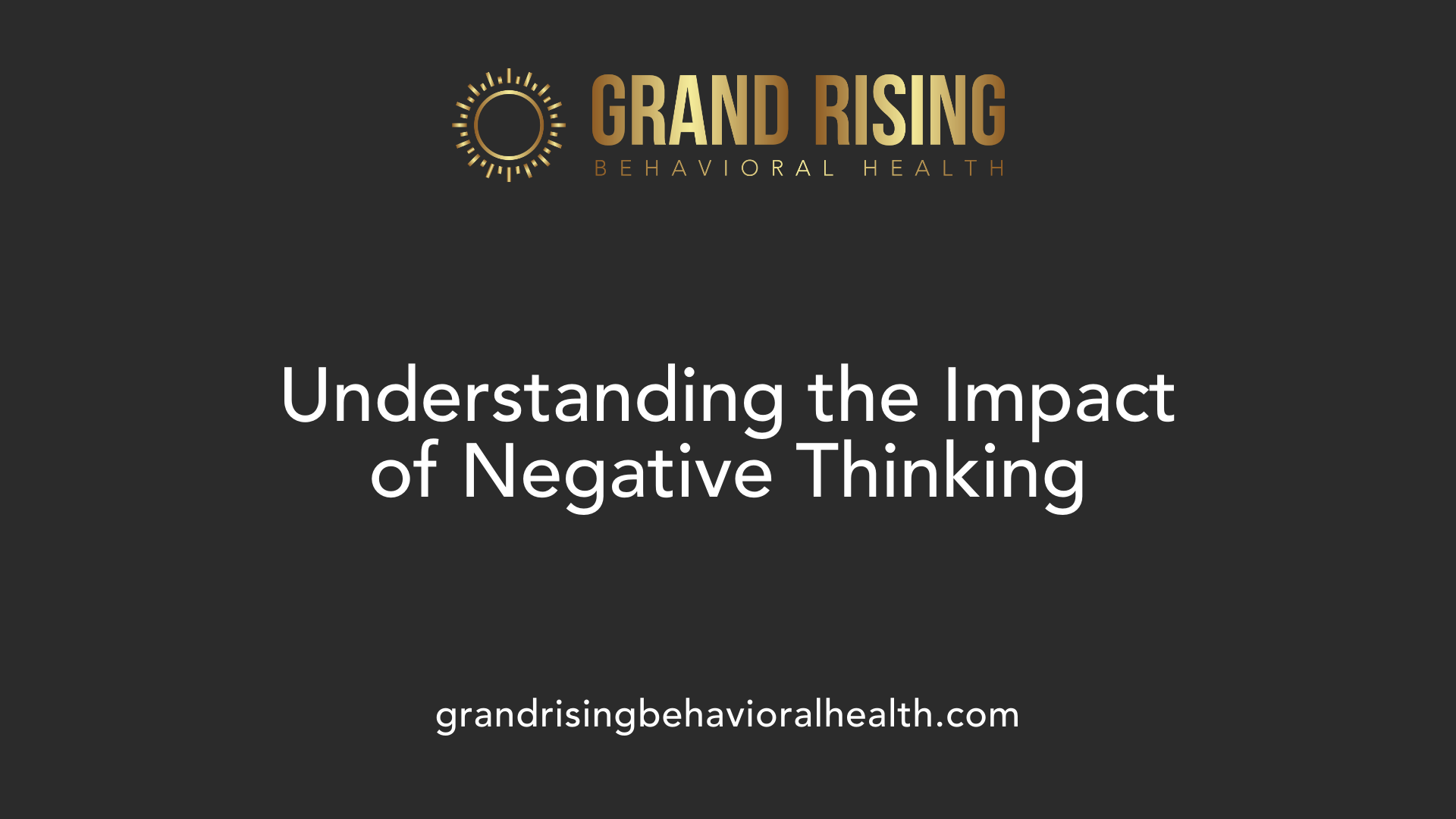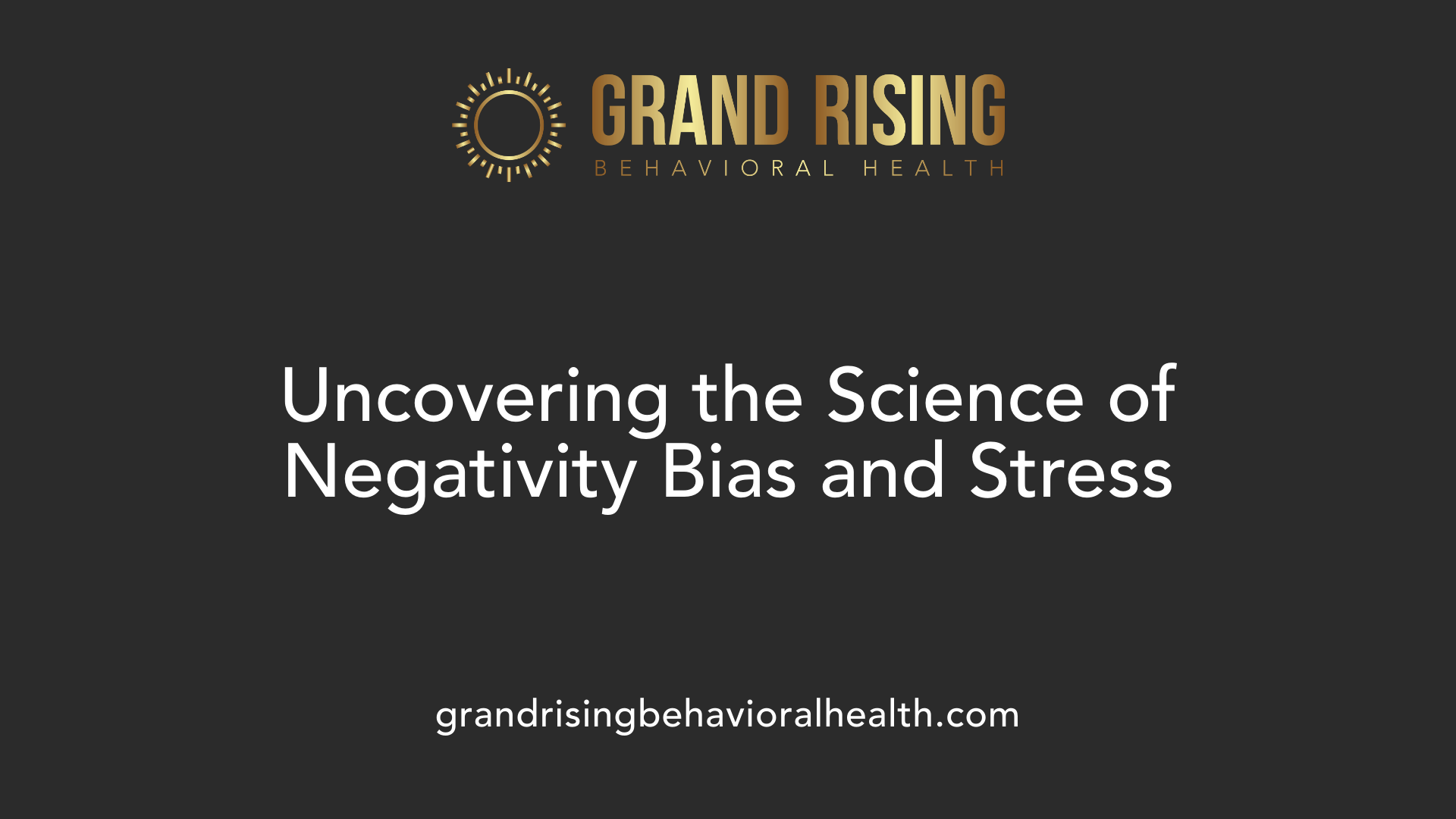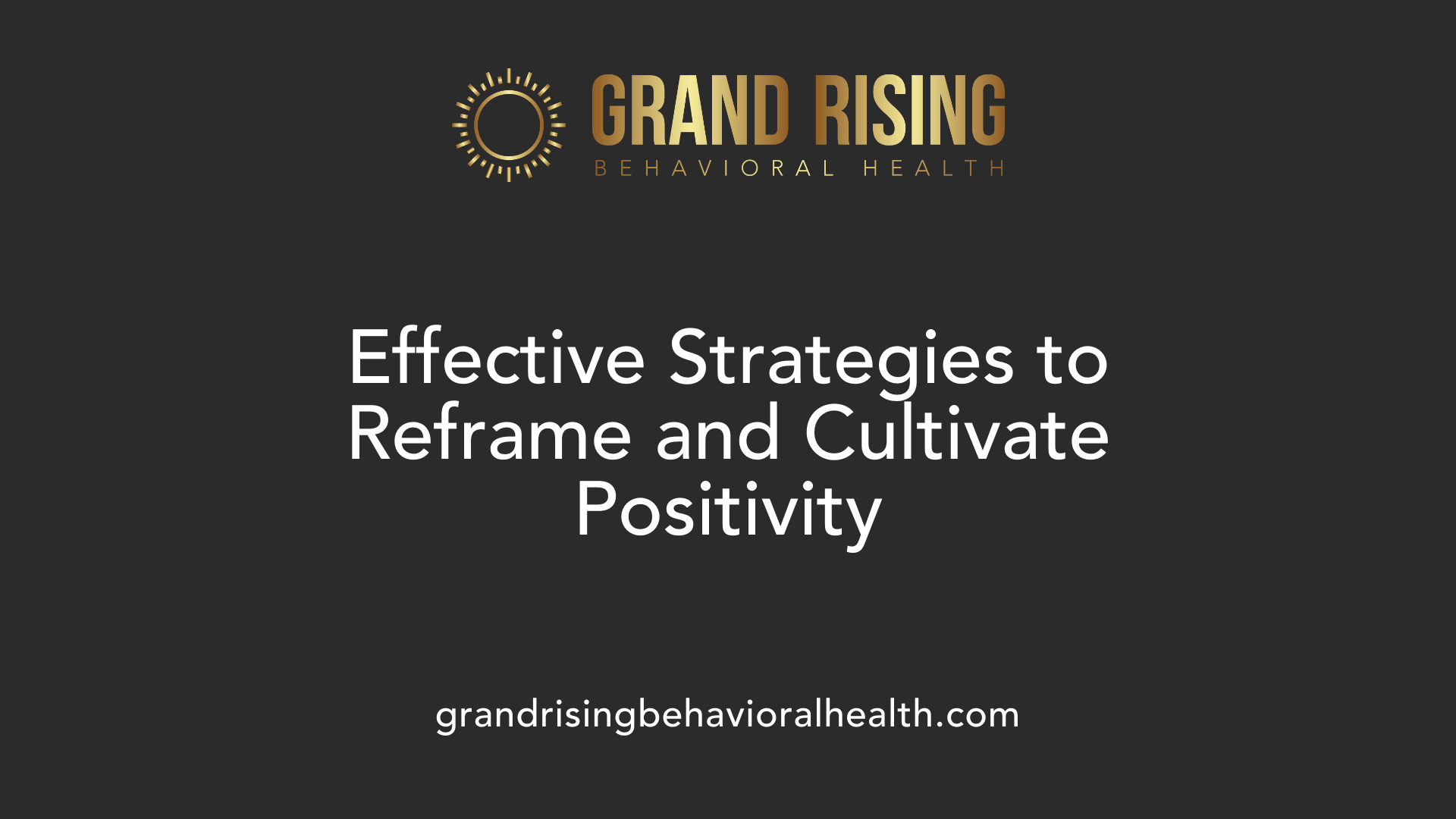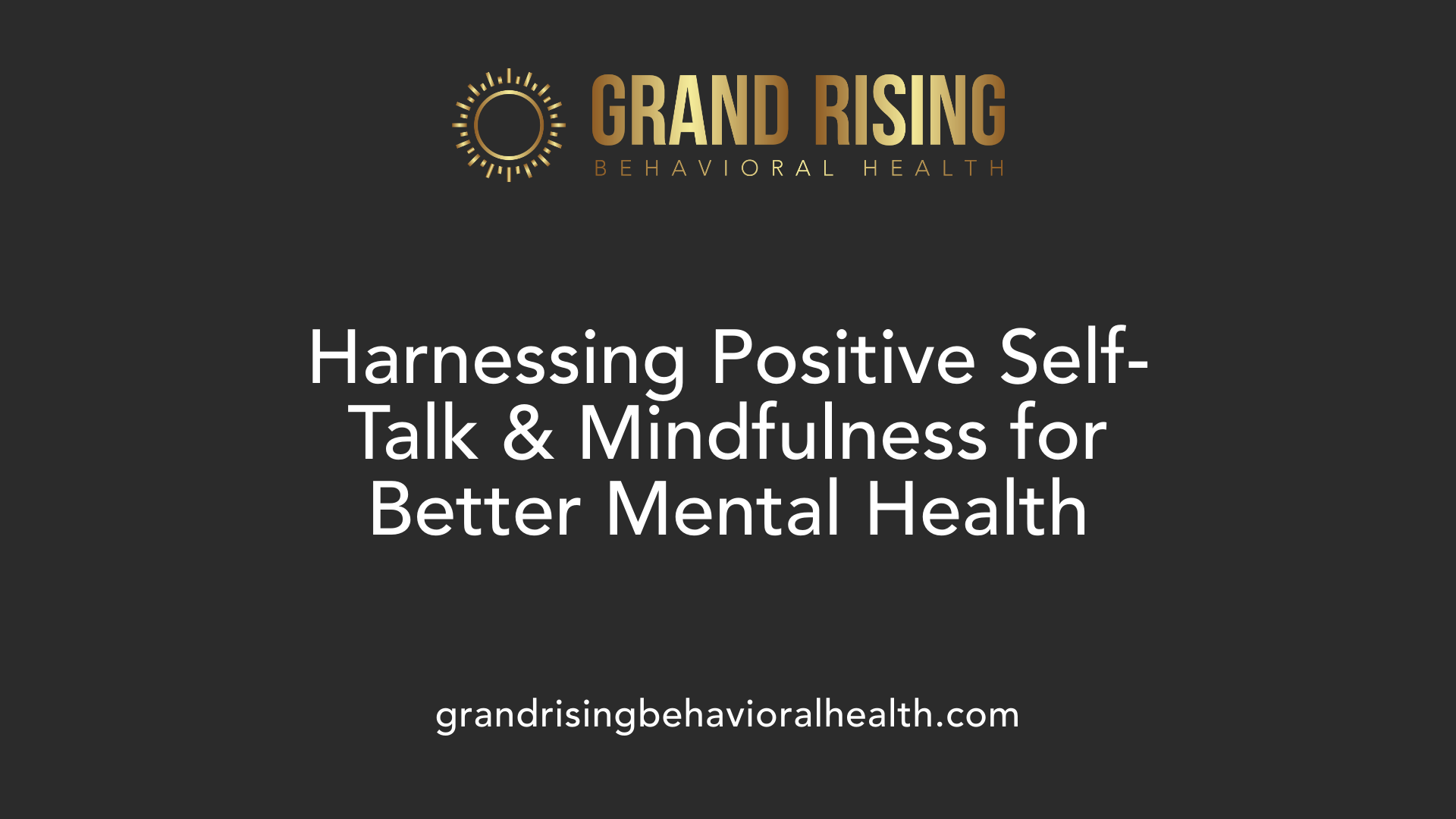Overcoming Negative Thought Patterns with Positive Psychology
Harnessing the Power of Positive Psychology to Transform Your Mindset

Unveiling Strategies to Overcome Negative Thought Patterns
Negative thoughts can subtly undermine our mental health, influence our behaviors, and shape our perception of reality. Fortunately, evidence-based techniques rooted in positive psychology and cognitive-behavioral therapy (CBT) offer practical pathways to challenge, reframe, and ultimately diminish these detrimental thought patterns. This article explores how embracing positive psychology practices can foster resilience, promote mental well-being, and cultivate a more optimistic outlook on life.
Understanding Automatic Thoughts and Their Impact
What are automatic thoughts?
Automatic thoughts are quick, involuntary mental activities that occur spontaneously throughout the day. These thoughts can be positive, negative, or neutral, and they often happen without conscious awareness. They are shaped by our experiences, beliefs, and emotions, serving as mental shortcuts to interpret our surroundings.
How do automatic thoughts influence mental health?
These mental shortcuts can significantly affect our emotional well-being and overall health. Negative automatic thoughts—such as feeling unworthy or expecting failure—are linked to depression, low self-esteem, and burnout, especially in high-pressure situations like sports. Conversely, positive automatic thoughts can help offset stress and are associated with greater happiness, resilience, and a positive outlook.
The relationship between automatic thoughts and emotional states
Thoughts directly influence feelings. When automatic thoughts are predominantly negative, they trigger emotional responses like anxiety, sadness, or irritability. These feelings can lead to physiological reactions, such as increased heart rate or stress responses. Recognizing and challenging these thoughts, especially through methods like cognitive restructuring, is essential for fostering balanced emotions and improving mental health.
Cognitive-behavioral therapy (CBT) and managing automatic thoughts
CBT is a proven therapeutic approach that helps individuals identify and modify problematic automatic thoughts. Therapists use worksheets and exercises to challenge distortions such as all-or-nothing thinking or catastrophizing. Through consistent practice, individuals learn to replace negative thoughts with rational, positive alternatives, enhancing emotional resilience and life satisfaction.
Practical tools for challenging automatic thoughts
Several techniques are employed, including mindfulness, which helps detach from negative habits by observing thoughts without judgment. Cognitive restructuring exercises—like the 'catch it, check it, change it' method—encourage examining evidence for and against thoughts, fostering healthier thinking patterns.
The importance of awareness and routine
Building awareness of automatic thoughts and emotional triggers enables better management of mental health. Regularly practicing these strategies, along with cultivating gratitude and positive self-talk, supports a healthier mindset and improves emotional outcomes over time.
| Aspect | Description | Additional Details |
|---|---|---|
| Definition of automatic thoughts | Quick, involuntary mental activities influencing feelings | Occur spontaneously and shape perceptions |
| Impact on mental health | Negative thoughts linked to depression and burnout | Positive thoughts promote happiness |
| Emotional influence | Thoughts trigger feelings and physical reactions | Recognizing and challenging thoughts improves mood |
| Management techniques | Cognitive restructuring, mindfulness, gratitude | Involves structured exercises and awareness strategies |
The Role of Negative Thinking and Its Consequences

Negative thinking patterns and their effects
Negative automatic thoughts are spontaneous mental activities that often skew our perception of reality towards the negative. Patterns such as catastrophizing, all-or-nothing thinking, and filtering can lead to a distorted worldview, fostering feelings of helplessness, anxiety, and depression.
These thought patterns are not just harmless mental habits—they have tangible effects on both mental and physical health. Persistent negative thoughts can contribute to symptoms of depression, reduce self-esteem, and even lead to burnout, especially in high-stress environments like competitive sports. For example, athletes experiencing negative automatic thoughts may feel overwhelmed, diminishing their confidence and performance.
The link between negative thoughts and mental health outcomes
Research shows that negative automatic thoughts are closely associated with various adverse outcomes. Depressive symptoms often involve pervasive negative thinking, which reinforces feelings of worthlessness and hopelessness. Similarly, negative thought patterns can increase stress levels, influencing physiological responses such as elevated heart rates and startle responses, which are markers of heightened anxiety.
Low self-esteem and rumination are also common consequences. When individuals habitually interpret situations negatively, it leads to a cycle of self-doubt and emotional exhaustion. Over time, this pattern can decrease resilience, making it harder for people to cope with life's challenges.
How negativity bias skews perceptions and decision-making
Negativity bias is our natural tendency to pay more attention to and remember negative information more vividly than positive. Evolutionarily, this bias helped our ancestors survive threats but now often leads to a skewed perception of reality. We tend to recall insults more than compliments, respond strongly to negative stimuli, and dwell on unpleasant experiences.
In the workplace, negativity bias can cause over-criticism of decisions, fear of risks, and reluctance to pursue new opportunities. It can also influence personal relationships by fostering negative interpretations of others' actions, which might lead to misunderstandings or conflicts.
Understanding how these biases shape our perceptions is crucial. By recognizing them, individuals can practice strategies like mindfulness, positive reframing, and gratitude exercises to counteract skewed perceptions and promote healthier thinking.
| Aspect | Effect | How to Address |
|---|---|---|
| Negative thoughts | Depression, burnout, low self-esteem | Cognitive restructuring, therapy, mindfulness |
| Negativity bias | Skewed perceptions, poor decision-making | Gratitude practices, positive psychology exercises |
| Decision-making | Risk aversion, over-cautiousness | Thought challenging, perspective-taking |
By actively working to identify and challenge negative thought patterns with techniques like cognitive restructuring and mindfulness, individuals can foster a more optimistic and resilient mindset. This approach not only improves mental health but also enhances overall well-being and interpersonal relationships.
The Science Behind Negativity Bias and Its Role in Stress

What is negativity bias?
Negativity bias refers to our natural tendency to focus more on negative experiences and information than on positive ones. This psychological inclination makes us more attentive to threats, more likely to remember upsetting events, and prone to dwelling on undesirable outcomes. Such bias can distort our perception of reality, causing us to view the world as more threatening or unpleasant than it truly is.
Evolutionary basis of negativity bias
Historically, negativity bias played an essential role in human survival. Our ancestors needed to be alert to dangers like predators and other threats to stay alive. This heightened sensitivity to negative stimuli ensured quick reactions to harmful situations, increasing their chances of survival. Although less necessary in modern society, this bias still influences our brains, causing us to prioritize negative information unconsciously.
How negativity bias influences attention, memory, and decision-making
Negativity bias impacts several mental processes:
| Process | Effect of Negativity Bias | Example |
|---|---|---|
| Attention | More likely to notice negative cues | Seeing threats in ambiguous situations |
| Memory | Better recall of negative events | Remembering insults more vividly than compliments |
| Decision-making | Heavily weighing potential negatives in choices | Avoiding risks due to fear of failure |
In the workplace, negativity bias can lead to risk aversion, while in relationships, it may cause misinterpretations and unnecessary conflicts. Recognizing this bias is crucial for developing strategies like mindfulness, gratitude exercises, and cognitive restructuring that help counteract its effects.
How can positive psychology practices such as positive self-talk help improve mental health?
Engaging in positive self-talk is a powerful strategy to combat negativity bias. It involves consciously replacing negative thoughts with encouraging or neutral ones. For instance, turning
Techniques for Identifying Negative Thought Patterns
Use of Worksheets and Exercises
Practicing cognitive restructuring involves using specific worksheets and exercises designed to help individuals recognize and challenge negative automatic thoughts. These tools typically include thought records where a person notes a distressing thought, examines the evidence supporting or contradicting it, and then develops a more balanced alternative. These activities are grounded in CBT practices and are effective for fostering self-awareness and emotional regulation.
Practicing Mindfulness and Present Moment Awareness
Mindfulness techniques play a crucial role in reducing negative thought patterns. By focusing on the present moment and observing thoughts and feelings without judgment, individuals can detach from automatic negative habits. Regular mindfulness practice helps create mental space, making it easier to identify and modify unhealthy thinking, and fosters a calm, centered outlook.
Detecting Cognitive Distortions
Recognizing common cognitive distortions is essential in managing negative thoughts. These distortions include all-or-nothing thinking, where situations are seen as black or white; catastrophizing, which involves expecting the worst; and personalization, where one takes undue responsibility for events.
Other distortions identified by Dr. Aaron Beck, a pioneer in cognitive therapy, include:
| Cognitive Distortion | Description | Example |
|---|---|---|
| All-or-Nothing Thinking | Seeing things in black or white categories | "If I’m not perfect, I’ve failed" |
| Overgeneralization | Viewing a single negative event as a never-ending pattern | "I always mess up" |
| Mental Filter | Focusing only on negatives while ignoring positives | "I only remember my mistakes" |
| Discounting the Positive | Dismissing positive experiences as insignificant | "That success doesn’t count" |
| Catastrophizing | Expecting the worst outcome | "This will ruin everything" |
| Magnification & Minimization | Exaggerating negatives or minimizing positives | "My effort is pointless" |
| Emotional Reasoning | Believing feelings reflect reality | "I feel hopeless, so it’s true" |
| Should Statements | Rigid rules for oneself or others | "I should be better" |
| Labeling | Assigning global negative labels | "I’m a failure" |
| Personalization & Blame | Blaming oneself or others for events | "It's all my fault" |
Learning to detect these distortions enables a person to challenge and reframe negative thoughts effectively. Techniques such as the 'catch it, check it, change it' method guide individuals through this process, encouraging them to evaluate evidence and develop healthier perspectives.
Practical Tools and Worksheets for Reframing Thoughts

Are there practical exercises or worksheets available to help challenge and change negative thoughts?
Yes, there are numerous practical exercises and worksheets designed to assist individuals in challenging and transforming negative thoughts. These tools are rooted in cognitive-behavioral therapy (CBT) principles and include a variety of formats such as downloadable or fillable worksheets.
One common resource is the "Thought Record," which guides users through identifying automatic negative thoughts (ANTs), examining the evidence for and against them, and replacing them with more positive or realistic alternatives. Many worksheets focus on recognizing cognitive distortions—biased thinking patterns that intensify negative feelings—and offer step-by-step strategies to address each one.
Specific exercises include:
- "Getting Rid of ANTS": This worksheet helps users pinpoint specific negative thoughts and challenge their validity.
- "Positive Replacement Thoughts": It guides users in developing healthier, more optimistic cognitions.
- "Cognitive Distortions": These sheets help identify distorted thinking such as catastrophizing or all-or-nothing thinking.
- "Socratic Questioning": This technique encourages questioning the thought patterns thoroughly to uncover their inaccuracies.
These tools are often customizable, allowing users to tailor them to their personal situations and specific negative patterns. The practical application of these worksheets promotes self-awareness, emotional resilience, and a shift toward more constructive thinking.
Regular use of these exercises can significantly improve mental health by fostering balanced perspectives, reducing stress, and cultivating a healthier mindset. Many of these worksheets are easily accessible online and can be incorporated into everyday routines for ongoing support.
Strategies for Reframing and Cultivating Positivity

How can challenging negative interpretations improve emotional wellbeing?
Challenging negative interpretations is an essential step in developing a healthier mindset. This process involves examining the evidence behind automatic negative thoughts and questioning their validity. By recognizing and disputing distorted thinking patterns, individuals can reduce feelings of depression, anxiety, and self-doubt. Engaging in cognitive restructuring, a core component of CBT, helps shift the focus from unhelpful to more constructive thoughts, fostering emotional resilience.
What techniques can help in reframing unhelpful thoughts towards more positive perspectives?
Several practical techniques are effective in rephrasing negative thoughts. Challenging automatic thoughts by asking oneself questions like, "Is there evidence for this belief?" or "Could there be an alternative explanation?" can uncover distortions such as all-or-nothing thinking or catastrophizing. Seeking positive alternatives involves intentionally replacing negative assumptions with neutral or positive statements to create a balanced outlook.
Using visualization is another powerful tool. Imagining successful outcomes or positive scenarios helps build confidence and counteract pessimism. Thought records or journals allow individuals to track their automatic thoughts, identify recurring negative patterns, and practice reframing by writing down more balanced, positive perspectives.
Furthermore, being aware of how perceptions shape reactions is vital. The ladder of perception illustrates how personal interpretations color emotional responses. Recognizing this process enables one to question initial judgments and consider more accurate or compassionate viewpoints.
How does awareness of perception influence attitude and reactions?
Understanding that perception influences emotional reactions empowers individuals to take control over their mental habits. By observing how interpretations skew reality, a person can consciously choose to adjust their perspective, which often reduces stress and promotes more rational responses. This awareness is foundational in mindfulness practices that foster present-moment awareness, detaching from automatic negative habits, and cultivating a positive mental environment.
What is the overall importance of managing interpretations?
Overall, managing how incoming information is interpreted is critical for mental health. It allows for a more realistic assessment of situations, reducing unnecessary distress and promoting adaptive thought patterns. Techniques such as visualization, thought records, and mindfulness are grounded in this understanding, helping individuals reshape their outlook and develop emotional resilience. Cultivating this skill leads to improved happiness and wellbeing, supporting a healthier, more positive mental attitude.
Positive Psychology in Practice: Self-Talk and Mindfulness

How can positive psychology practices such as positive self-talk help improve mental health?
Engaging in positive self-talk is a powerful way to enhance mental well-being. It involves consciously replacing negative thoughts with encouraging and supportive phrases, which can reshape one’s outlook on life. When we talk to ourselves positively, it reduces harmful cognitive patterns like catastrophizing (expecting the worst) and personalizing negative events.
This practice encourages the brain to release neurochemicals such as serotonin, which promote feelings of calm and happiness. Over time, positive self-talk helps individuals develop resilience, build self-esteem, and regulate emotions more effectively. It acts as a mental buffer against stress and depression, fostering a constructive mindset that supports emotional stability.
What role do mindfulness and present-moment awareness play?
Mindfulness and focusing on the present moment are essential techniques for detaching from automatic negative thoughts. Mindfulness involves observing thoughts and emotions without judgment, helping individuals recognize unhelpful patterns early. This awareness makes it easier to challenge distorted thinking and choose healthier responses.
By practicing mindfulness regularly, people can reduce stress, enhance concentration, and improve overall mental health. It promotes a balanced perspective and discourages rumination on past mistakes or future worries.
How can practicing gratitude and acts of kindness contribute?
Cultivating gratitude and engaging in acts of kindness are practical ways to boost happiness and foster positivity. Daily gratitude exercises, such as listing things one is thankful for, reframe attention towards positive experiences and reduce negativity bias.
Acts of kindness, whether through small gestures or volunteering, can increase feelings of connection and purpose. Spending time in nature and participating in charitable activities also helps lower stress levels and enhance overall life satisfaction.
By integrating these practices into daily routines—such as creating positive morning rituals, maintaining a gratitude journal, or performing acts of kindness—individuals can develop a resilient, optimistic mindset that supports mental health and well-being.
The Connection Between Positive Thinking and Physical Health
Physical health benefits of positive outlook
Having a positive mindset isn't just good for your mood—it also has tangible benefits for your physical health. Studies show that people who maintain optimistic attitudes often experience lower levels of stress, which reduces wear and tear on the body. This positive outlook can boost the immune system, helping the body resist illnesses more effectively. Additionally, positive thinking is associated with increased resistance to infections and quicker recovery from health setbacks.
Stress reduction and cardiovascular health
Chronic stress is a significant risk factor for cardiovascular diseases such as hypertension and heart attacks. Positive thinking helps counteract stress by promoting relaxation and resilience. Techniques like mindfulness and reframing negative thoughts into positive ones can lower stress hormone levels and decrease blood pressure. Over time, this reduces the strain on the heart and arteries, improving overall cardiovascular health.
Longevity and immune function
Optimistic individuals tend to live longer, healthier lives. Their positive outlook enhances immune function by reducing stress-related inflammatory responses. Furthermore, engaging in activities that promote gratitude and happiness—like spending time in nature or practicing positive self-talk—can bolster immune defenses. These practices not only contribute to longevity but also improve quality of life by reducing the risk of chronic illnesses.
| Benefits | Evidence | How to Cultivate |
|---|---|---|
| Improved immune health | Scientific studies show inverse links between optimism and illness | Practice gratitude, challenge negative thoughts, surround yourself with positivity |
| Reduced cardiovascular risk | Positive thinking lowers stress hormones | Use mindfulness, develop new thinking patterns, engage in stress-relieving activities |
| Longevity | Longer lifespan correlated with positive outlook | Maintain healthy habits, cultivate optimism, foster social connections |
Ultimately, nurturing a positive mind can lead to stronger health, a longer life, and a more resilient body capable of overcoming life's challenges.
Conclusion: Embracing a Positive Mindset for Lasting Well-being
The importance of managing automatic thoughts and addressing negativity bias cannot be overstated when fostering mental well-being. Techniques like cognitive restructuring and mindfulness are essential tools that help individuals identify and challenge negative thought patterns, turning them into positive, rational alternatives. Worksheets and exercises are practical resources that support this process, aiding in the development of healthier thinking habits.
Practicing these strategies regularly enhances self-awareness and resilience, contributing to improved emotional health. Positive self-talk, in particular, plays a vital role by training the brain to focus on constructive thoughts, which can boost self-esteem and reduce symptoms of depression and anxiety.
Negative biases, rooted in our evolutionary past, influence our perceptions and decision-making, often leading to overly cautious or pessimistic attitudes. Counteracting this requires deliberate effort, including exercises that cultivate gratitude, savor positive experiences, and monitor negative self-talk. The Future Events Scale provides a way to assess one’s tendency toward pessimism, helping individuals tailor their mental health approaches.
Incorporating positive psychology into everyday life—through acts of kindness, spending time in nature, and developing morning routines—can significantly uplift mood and outlook. These practices, supported by scientific research, help foster a balanced perspective and promote overall wellbeing.
By continually practicing techniques like mindfulness, cognitive restructuring, and positive self-talk, individuals can rewire their thought patterns. This commitment not only diminishes negativity bias but also nurtures a resilient, optimistic mindset that sustains mental health over time.
Fostering a positive mindset is an ongoing journey that benefits from consistent effort and integration into daily routines. Embracing these approaches enhances emotional stability, encourages healthier decision-making, and ultimately leads to a more fulfilling, happier life.
Fostering Continuous Positivity for Mental Wellness
Incorporating positive psychology strategies into daily routines offers a powerful way to transform negative thought patterns and foster lasting mental well-being. Techniques such as cognitive restructuring, mindfulness, positive self-talk, and gratitude exercises work synergistically to rewire the brain, reduce negativity bias, and develop resilient, optimistic outlooks. Remember, change requires consistent effort and a gentle approach—practicing these strategies regularly can lead to profound improvements in mental health, stress management, and overall quality of life. Embrace these tools to cultivate a positive mindset that nurtures happiness, health, and emotional strength over the long term.
References
- 5 Best Automatic Negative Thoughts Worksheets (PDF)
- What Is The Negativity Bias and How Can it be Overcome?
- Positive thinking: Stop negative self-talk to reduce stress - Mayo Clinic
- Cognitive Restructuring Techniques for Reframing Thoughts
- How to Retrain Your Brain: Tips for Positivity & Success | USAHS
- Overcoming Negative Bias with Positive Psychology
- 10 Common Negative Thinking Patterns and 5 Steps for Change: Blog
- Reframing unhelpful thoughts - Every Mind Matters - NHS
- Reframing unhelpful thoughts - Every Mind Matters - NHS
More Resources
A team ready to start your journey.
Get in touch — today.
We are a safe space – a haven for exceptional individuals to receive discreet, personalized, in-person treatment and care.
.avif)










